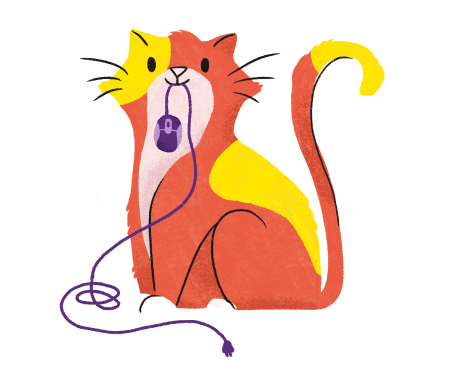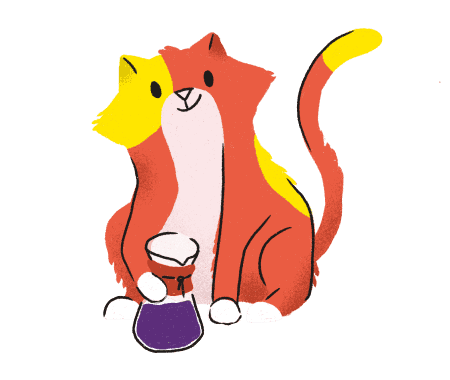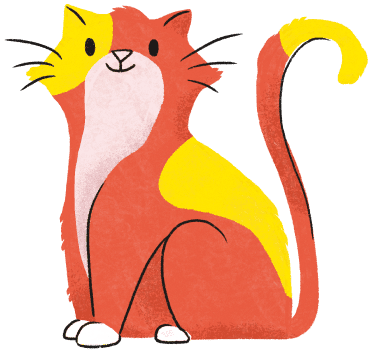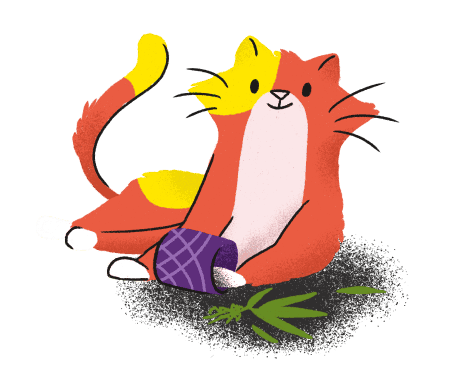The Problem with Curiosity
Like all living things, it's gotta have space to breathe.
How many times has a project leader told you to “think different” while carving out no time, structure or community to allow it to happen?
Workplaces often only reactively innovate in times of churn, when knee deep in the thick of a problem that needs a pivot, fast. Did you fix it yet?! It’s a brain bog that swallows people and budgets whole.

An Experimental Solution
One strength as a leader is understanding you don’t have all the answers and looking instead to set your people up with a framework for vetting ideas and making smart decisions.
At Flagrant, we’re developing a culture of experimentation that is rooted in the scientific method while leaving plenty of room for jiggle-til-it-works discovery.
What Do The Experiments Look Like?
Rule #1 You cannot run an experiment that affects people without their consent.
Anyone on the team can propose any type of experiment – a personal branding pitch, a self-care workshop, a dog park app that serves as a digital butt sniff. Whatever.
Those experiments are then reviewed by the entire team each week in a company-wide meeting. It doesn’t matter if the head of the company pitches. Each idea must be vetted as Approved, Rejected, or pending Change Requests.

The Pitch Template
Hypothesis – What do we think will happen if we run this experiment?
Cost – What resources will we need to carry out this experiment? (People’s time? Equipment? Money?)
Turnaround Time – How long will it take until we see results?
Success – What does a successful outcome look like?
End Conditions – What conditions would need to be true to cancel the experiment before the specified Turn Around time?
Accountable Party – This person owns and is responsible for executing and reporting on the progress of the experiment.
How Decisions Are Made
Decisions are still made the way they always have been. Someone in leadership pulls the trigger and says “Yes, let’s run this experiment.” However, the team has had an open conversation, an ability to weigh in with concerns, and the opportunity to see the decision-making process.

Success: Flagrant Reset
As a consulting company, we often break up into teams and don’t get to intersect as much as we’d like. We recognized this prior to the experiment framework and created Flagrant Recharge, which reserves a few hours on the last Wednesday of each month for playing games or shooting the breeze.
Our resident Friendship Enabler, Joyce, saw an opportunity to go deeper – proposing a 12-week experiment. She organized and facilitated a 1-hour optional workshop each week to allow our team to connect as squishy humans. During these sessions we would address stressors, learn about love languages, or just hold space for a writing workshop.
The team was so moved, so connected, and so engaged that we are now externalizing Joyce’s content to share with other organizations as facilitated workshops.
Important Failure: Quickbooks Time Entry
Not every experiment is a success, but that doesn’t mean it isn’t valuable. Jen, our Director of People, saw an opportunity to streamline time tracking for invoices. In order for her to realize that benefit, everyone in the company had to change how they track their time.
Before imposing a drastic change, she proposed an experiment: Three people would volunteer to try the new system. Beyond that she suggested a group of volunteers containing an ambivalent volunteer, an enthusiastic volunteer, and a skeptic. The experiment was slated to last for two months to give us an opportunity to interact with all phases of the invoice process.
Given the opportunity to see the impact of the new process, Jen yanked the experiment after two weeks and Quickbooks Time Entry was off the table. Everyone felt heard and understood the reasons for the decision.
In Progress: Other Experiments
There’s still so much we don’t know. But that’s the beauty of experimentation. All movement is helpful, and the learning is never done. Here’s a preview of few experiments in flight.
Morgan, our Soul-lifting Copywriter, created a three-part Imposter Syndrome workshop. Through Enneagram tests, company-wide hype letters delivered like 3rd grade Valentine’s cards, and the illuminating words of inclusivity coach and guest speaker, Tali Lavarry, her experiment has given us a common vocabulary and new eyes to overcome self-doubt.
Meanwhile our VP of Consulting, Jonathan “JB” Broad, used the experiment framework shortly after joining Flagrant to scale our 1:1 meetings. Previously these employee 1:1s were conducted entirely by yours truly, every other week. JB suggested an alternative hybrid model spread across three leaders to share those connections and introduce new leadership to the process.
The Point: Keeping Minds Open and Walls Down
Building experiments into your work culture is like shaking a jug of mind juice. (Do not drink.) It stirs everyone up, regardless of roles, and provides a flow of idea-sharing.

Experiments encourage healthy questioning while actively involving team members in company change rather than imposing it. Instead of an empty “think different” invitation, people are given a weekly framework to share, sluice and push forward. Instead of management passing down solutions to their own pain-points, teammates are empowered to propose their own changes to make the culture one in which they can do their best work.
How to solve the problem with curiosity then? Respect the people who harness it.
If you’re looking for a team to help you discover the right thing to build and help you build it, get in touch.
Published on June 23, 2022
